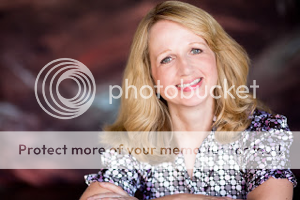Weekends are laid back on Teachers Write. There’s no official “assignment,” but we still love to give you something to read & reflect on as you drink your morning coffee or tea. With that in mind, I’ll introduce today’s guest author, Caroline Rose Starr.
Caroline was named a Publishers Weekly Flying Start Author for her debut novel, May B. She’s also the author of the verse novel Blue Birds and the picture book Over in the Wetlands. Caroline spent her childhood in the deserts of Saudi Arabia and New Mexico, camping by the Red Sea in one and eating red chile in the other. She has taught social studies and English in four different states and worked to instill in her students a passion for books, an enthusiasm for experimenting with words, and a curiosity about the past. Today, she joins us to talk about novels in verse.


Back in my teaching days, I used to introduce poetry to my students by first asking them to interview their parents about their own experiences with the form. Many fondly remembered nursery rhymes, Shel Silverstein, A. A. Milne and the like, but their opinions changed when they got older. Once the parents faced poetry that felt confusing or obscure, those positive memories were mostly forgotten.
I will confess that no matter where I taught, my upper-elementary and middle-school students were transitioning in their thoughts about poetry, moving from those fun younger-year experiences into something more guarded and less interested. What showed me this is the strange but similar words kids thought of in connection to poetry. Without fail, they told me poetry was about flowers and love and it was definitely for girls. I’d spend the rest of our year together trying to reverse the idea that poetry is limited to certain subjects and a select type of reader. Almost always I could win them over by the end.
Verse novels are a perfect fit for young readers in this phase of conflicting thoughts. Here are three reasons the verse novel is worth sharing:
A verse novel is a fast read. This can be enormously satisfying for readers who find standard prose a struggle. There are no dense paragraphs. The white space, which verse novelists use along with line and stanza breaks to further communicate their story, makes each page less intimidating. Individual poems run much shorter than chapters, adding momentum to the story’s pacing.
Because each word is carefully selected, verse novels strip away the unnecessary. If a prose novel is a rolling film, a verse novel is a collection of still photographs, placed one against the next. This streamlined structure, which often includes a close first-person point of view, gives readers an intimate picture of a book’s central characters. Readers can feel and hear the rhythms of a character’s inner world, can experience the story alongside her.
My students were right about the love thing. Poetry heightens the emotions. And verse novels make stories come alive by pushing readers one step closer to the world on the page. Each word speaks doubly — first telling the story, second helping readers feel it. Emotion and physical sensation are intertwined, so much so that as the verse novelist leads readers through a story they might feel the darting movement of fear, the gentle calm of reflection, the scattered sense of confusion, the security of being known and loved.
Poetry isn’t exclusive, as my students first thought, but sometimes it feels like it is. That’s the beauty of the verse novel, a succinct, condensed blend of poetry and story that flows from one word to the next. Those words sink deep, move with the familiar rhythms of the everyday. The verse novel doesn’t just tell a story, it shows us how to listen, encourages us to linger. It changes us along the way.






